Decoding The World Tarot Card: Meaning & Significance
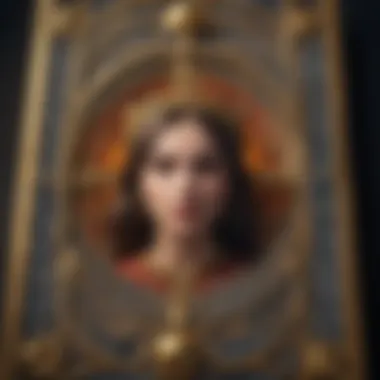
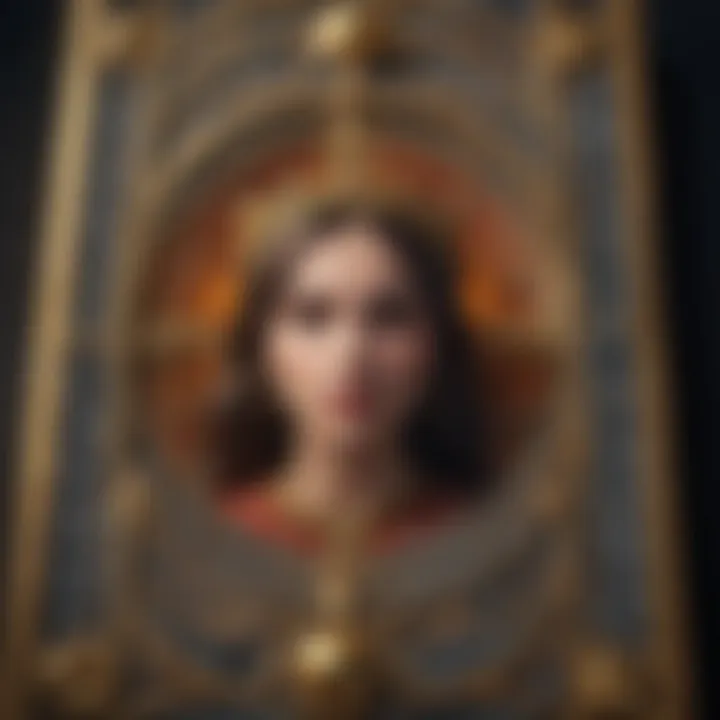
Intro
The World tarot card embodies profound themes of completion and fulfillment. Its imagery signifies the culmination of experiences and the interconnectedness that life offers. Understanding this card not only provides insight into personal journeys but also reflects upon the larger tapestry of existence. This article delves into the meanings, symbols, and applications of The World card in tarot readings, catering to both novices and seasoned practitioners.
Characteristics of Each Zodiac Sign
In the context of tarot, understanding zodiac signs can enhance the interpretation of The World card. Each sign carries specific traits that resonate with the card's themes. Here is an overview:
- Aries: Initiators, energetic, but can be impulsive.
- Taurus: Stable, practical, may resist change.
- Gemini: Communicative and versatile yet may be inconsistent.
- Cancer: Emotionally intuitive, can be overly sensitive.
- Leo: Charismatic and confident, but may seek validation.
- Virgo: Detail-oriented, practical yet sometimes critical.
- Libra: Harmonious, seeks balance, can be indecisive.
- Scorpio: Intense and passionate, but can be secretive.
- Sagittarius: Adventurous, optimistic, may avoid commitments.
- Capricorn: Disciplined, ambitious, yet can be cold.
- Aquarius: Innovative and rebellious, but may be detached.
- Pisces: Empathetic and creative, can be escapist.
Each zodiac sign adds a layer of nuance to the interpretations of The World card. By integrating these characteristics, one can deepen their understanding of how personal experiences align with the card's meaning.
How to Interpret Tarot Cards
To truly grasp The World card, one must understand the broader context of tarot. Here are some key points to consider:
- Major and Minor Arcana: The tarot deck comprises two main sections. The Major Arcana represents significant life events, while the Minor Arcana speaks to daily experiences.
- Meaning of Key Cards: Each card conveys specific messages. The World signifies success, accomplishment, and harmony.
- Sample Interpretations in Different Spreads: In a three-card spread, The World often highlights the final stage of a journey. In a Celtic Cross, it represents a culmination of efforts.
- Overview of Deck Styles: Various tarot decks exist. Some are traditional, while others incorporate modern themes. Choosing the right deck can influence interpretation.
- Popular Decks and Their Unique Features: Decks like the Rider-Waite and the Thoth bring unique perspectives on the meanings of cards, including The World.
Finale
Prologue to The World Tarot Card
The World tarot card holds a esteemed place in the realm of tarot, embodying themes of completion and wholeness. This card serves as a symbol of fulfillment, indicating that a significant journey or phase in life has reached its conclusion. Understanding The World card is vital for both novices and seasoned practitioners alike, as it provides insights into one's life experiences and connections with others.
Exploring The World card allows readers to appreciate the interplay of various elements within the tarot framework. This includes recognizing how it interacts with different cards in the deck and contributes to overall readings. The card is not just about endings but also signifies new beginnings, emphasizing the cyclical nature of life. Therefore, delving into this card provides valuable knowledge that aids personal and spiritual growth.
Historical Context
To understand The World card better, it is essential to consider its historical roots. The imagery found in this card has evolved through centuries, drawing influences from various artistic styles and esoteric traditions. Originally, tarot cards emerged in the 15th century in Europe, primarily as playing cards. Over time, they transformed into tools for divination and spiritual reflection.
The World card, known as "Le Monde" in French tarot decks, is often associated with the completion of significant life cycles. Its development can be traced back to Medieval and Renaissance thought, where concepts of wholeness and unity were prevalent in philosophical discussions. Several tarot decks, such as the Marseille and Smith-Waite, contributed to the established symbolism found in The World card, linking it to notions of cosmic balance and interconnectedness.
Position in the Tarot Deck
In the structure of the tarot deck, The World card occupies a pivotal position. It is the last card in the Major Arcana, signaling a culmination of experiences portrayed in preceding cards. The organization of the Major Arcana reflects a journey through personal development and spiritual awakening. As such, The World signifies both an end and a comprehensive integration of life's lessons.
The World card's placement highlights its significance in tarot readings. When positioned in an upright manner, it often heralds positive outcomes, indicating successful completion and harmony. Conversely, a reversed position may suggest a feeling of incompleteness or stagnation. Thus, understanding The World card, particularly its placement in the spread, is crucial for revealing deeper insights in tarot readings.
"The presence of The World in a spread often evokes feelings of accomplishment and interconnectedness that resonate with the querent's life journey."
In summary, exploring The World card encompasses an appreciation of its historical context and position within the tarot structure. This foundational understanding sets the stage for a deeper inquiry into the card's rich symbolism and varied interpretations in divination, making it essential for anyone serious about tarot.
Symbolism of The World Card
The World card is a culmination of the journey represented by the tarot. As the final card of the Major Arcana, it carries deep symbolism. Understanding its symbolism provides insight into its significance in personal growth, fulfillment, and the unity of life's experiences. The aspects of imagery, color, and the figures depicted in the card are not just artistic choices; they convey profound meanings that resonate throughout tarot readings. Each element is carefully designed to represent life's interconnectedness and the cycles we all experience.
Imagery and Colors
The imagery on The World card often features a female figure, usually depicted in a dance-like pose, representing harmony and balance. The colors selected are vibrant and rich, often blues, greens, and golds. Blue symbolizes depth and knowledge, while green signifies growth and vitality. Gold reflects completeness and success. Each color plays a role in conveying the card’s core message: the realization of one's potential and the achievement of a higher state of consciousness.
The backgrounds typically include a wreath or circle, which indicates completion of a cycle. This symbolizes not just an end, but the potential for new beginnings, embodying the essence of fulfillment in life’s journey. Details in the background often feature landmark imagery from different cultures, suggesting the universality of the themes contained within this card.
The Circle and Ouroboros
The circle, often represented in the form of a wreath in the card's design, carries significant importance. It illustrates the cyclical nature of life. Each end is a new beginning, reinforcing the idea that completion is not absolute but rather a transition into further phases of life. The Ouroboros, a serpent eating its own tail, is a potent symbol of this cycle. It represents self-sufficiency and the continual regeneration of life. The presence of this symbol in The World card reflects the idea that life is an ongoing process of formation, destruction, and rebirth.
"The circle symbolizes the totality of the human experience, where every ending leads to a new horizon."
Understanding this concept is crucial when interpreting The World card. It allows the reader to comprehend that while one phase may conclude, the opportunities for growth and new experiences are always present on the horizon.
Figures in The World
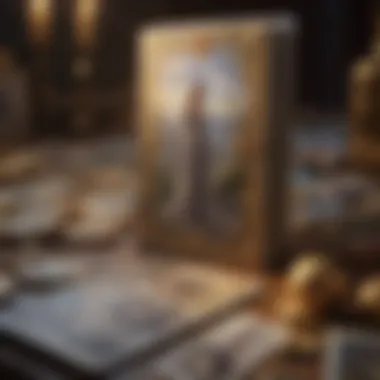
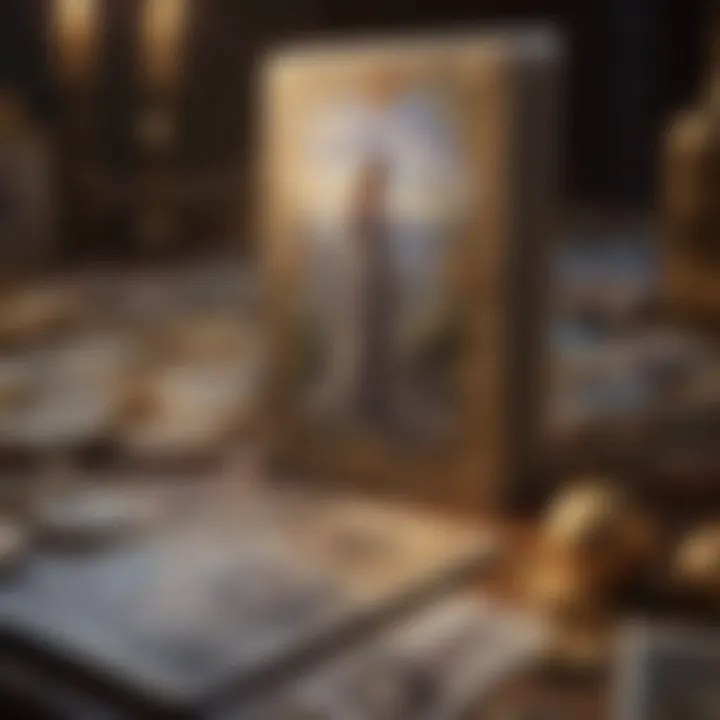
The figures present in The World card typically include four elemental beings: an angel, a lion, a bull, and an eagle. These representations correspond to the four suits in the tarot, uniting them within the context of completion. The angel represents air and intellect, the lion symbolizes fire and passion, the bull stands for earth and stability, and the eagle embodies water and intuition.
This inclusion illustrates the balance of the elements and the fulfillment that comes from integrating various aspects of life. The presence of these figures signifies the importance of harmonizing one's inner self with external influences and the environment. In readings, the figures can remind the querent of the need to embrace all aspects of their being, including intellect, emotion, and instinct.
In summary, the symbolism contained in The World card is multifaceted. It presents a rich tapestry of connectivity, completion, and rebirth, offering insights that are both profound and practical. Understanding the images, colors, circles, and figures assists in interpreting the card's messages accurately during readings, contributing to a deeper exploration of the self and one’s life journey.
Meanings of The World Card
The World card holds profound significance in tarot, representing conclusions and interconnectivity. It encapsulates a sense of wholeness and achievement. Understanding the meanings associated with The World card can be immensely beneficial for both readers and those seeking clarity about their lives. The card's upright and reversed interpretations offer insights into different life aspects, including personal growth, fulfillment, and the cycles of existence.
Upright Interpretation
When The World card appears in its upright position, it suggests completion and success in a journey. This is not merely about finishing tasks but embracing the totality of experiences leading to this moment. It indicates mastery over challenges, a culmination of efforts, and recognition of life lessons learned along the way. The feeling of fulfillment is prevalent in this interpretation.
Some common themes include:
- Achievement: This often signifies a long-term goal being realized. The efforts invested culminate in a satisfying result.
- Harmony: The upright position can suggest a balance of energies, symbolizing harmony between your inner self and the outside world.
- Travel: It may also indicate physical or metaphorical journeys—expanding horizons and exploring new possibilities.
- Integration: A sense of wholeness is present, where past experiences, lessons, and knowledge combine to form a well-rounded individual.
This interpretation serves as a reminder that all experiences contribute to one's development and eventual success.
Reversed Interpretation
In contrast, The World card's reversed position conveys feelings of incompletion or stagnation. It can signal delays or obstacles in achieving one's goals. This position invites reflection on what may be hindering progress in various life areas.
Key elements to consider when interpreting the reversed card include:
- Incomplete Journey: There might be unfinished business or lingering issues that block personal growth or sense of closure.
- Lack of Integration: Lessons from past experiences may not have been fully absorbed or understood, leading to cycles that repeat.
- Resistance to Change: This position often signifies a reluctance to adapt or move forward, resulting in a stuck state.
- Self-Doubt: It may reflect feelings of inadequacy or unworthiness that prevent one from pursuing success or personal fulfillment.
The reversed interpretation encourages a deep introspection. It is a call to confront the barriers, reassess goals, and recognize what genuinely needs attention in order to foster personal wholeness.
The World and Life Cycles
Completion and Fulfillment
In the context of The World card, completion signifies reaching significant milestones. This card suggests that an individual may have achieved a goal, resolved challenges, or attained a sense of wholeness. This feeling of fulfillment implies not just personal success, but a deep understanding of self and surroundings.
Moreover, completion in The World card associates with the idea of an end phase leading to satisfaction. It allows individuals to reflect on their journey, gather lessons learned, and appreciate the growth that came from previous hardships. This reflection process enhances self-awareness, paving the way for more profound insights into future endeavors.
"Completion is an invitation to celebrate success while preparing to evolve further."
In practical terms, when the World card appears in a reading related to completion, it could signify the end of a chapter, like graduating from school or concluding a long project. Recognizing and celebrating such moments solidifies a sense of achievement.
New Beginnings
While The World card embodies completion and fulfillment, it also opens the door to new beginnings. The end of one cycle strongly correlates with the start of another. This dynamic interplay is essential for continuous growth. Transitioning into a new phase can be both daunting and exhilarating.
The World card encourages individuals to embrace change, welcoming what is to come. With lessons learned, new beginnings allow for refreshing perspectives and opportunities. An ending can often feel like a loss, but in reality, it paves the path for transformation and reinvention.
New beginnings illustrated by this card imply renewed energy and a sense of adventure. It inspires individuals to take risks and explore new ventures without the weight of past failures. When viewed in a reading, The World card emphasizes not only what is left behind but the adventures that lie ahead, reinforcing hope and excitement for the future.
Closure
In exploring The World and its relationship with life cycles, one sees the nuanced interplay between ends and beginnings. The recognition of completion fosters personal growth, while the acceptance of new beginnings invigorates the soul. Together, these concepts create a holistic understanding of one’s journey, essential for both practical tarot reading and personal development.
The World in Tarot Readings
The World card carries profound significance when it appears in tarot readings. It encapsulates a journey's end, denoting completion, and the attainment of a goal. This card is pivotal to understanding how life experiences intertwine. When considering the World card during a reading, its implications cannot be overstated. It not only highlights achievements but also the interconnectedness of various life facets.
The World card serves as a conclusive note in a spread, often indicating that the querent has successfully navigated through various trials. It represents both a sense of fulfillment and the readiness for the subsequent phase of life. This duality is crucial; it prompts readers to not only acknowledge accomplishments but also to prepare for new beginnings that follow.
Interpreting The World During a Reading
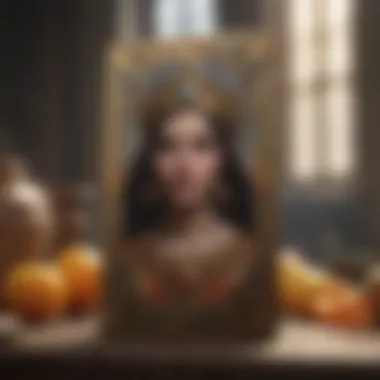
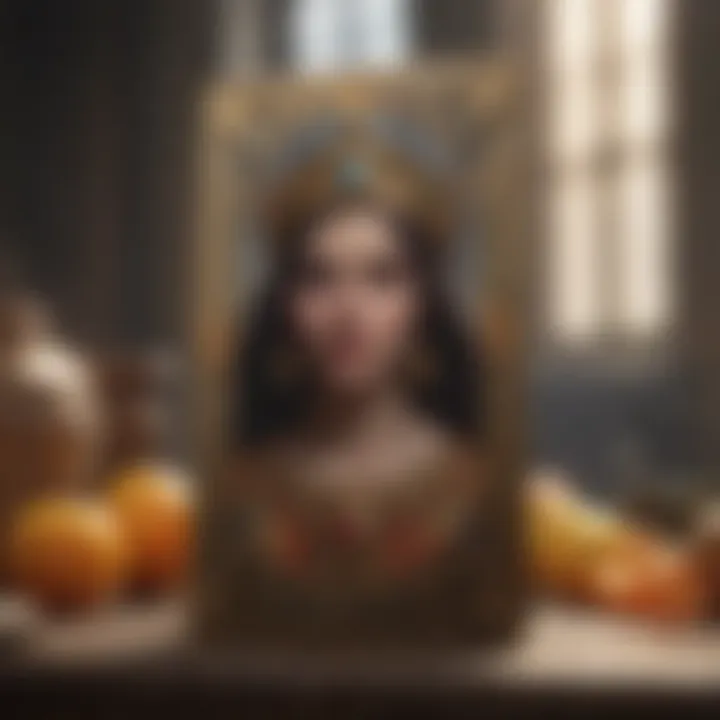
When interpreting the World card, context shapes its meaning. One should assess the surrounding cards to glean deeper understanding. If the World appears with cards like the Fool, it may suggest a new journey stemming from one's achievements. Conversely, associating it with the Tower might indicate the need to rethink before moving forward.
Several elements merit attention during the interpretation:
- Upright Position: In this position, the card often suggests triumph, holistic understanding, and wholeness.
- Reversed Position: When reversed, it may represent unfinished business or missed opportunities.
- Position in Spread: The World card's placement can enhance or diminish its significance based on the reading's overall narrative.
"The World card signifies the culmination of experiences and wisdom gained, urging seekers to reflect on what they have learned."
This reflective aspect is integral as it connects past experiences to the broader future. Readers should encourage clients to explore personal growth insights drawn from interpretations.
Common Questions Associated with The World
Several questions frequently arise when the World card appears in readings. These inquiries often touch on aspects of completion, transition, and personal evolution. Being prepared to answer them can enhance the reader's role in facilitating understanding.
- What does it mean for my current situation? Clients often wonder how The World card's appearance relates to ongoing challenges or accomplishments.
- Am I on the right path? The card can inspire confidence, yet clients may question the next steps to maintain momentum.
- How do I integrate past lessons? With its focus on completeness, clients may seek ways to apply their growth effectively.
Addressing these questions can provide clarity and foster a smoother transition for the querent as they navigate their life’s complexities. In summary, the World card brings clarity and closure while prompting introspection on future possibilities.
The World Card and Personal Growth
The World card plays an essential role in personal growth as it encapsulates themes of completion, fulfillment, and interconnectedness within the journey of life. This card is not merely about achieving goals; it signifies a broader understanding of how experiences shape one's identity. When one encounters The World in a reading, it encourages reflection on accomplishments and challenges faced, prompting deeper insights into personal development.
By examining this card, individuals may recognize their journey's significance, encouraging them to embrace their wholeness and integrate lessons learned. Thus, the exploration of The World card in the context of personal growth reveals a path toward self-acceptance and a holistic view of one's life experiences.
Self-Acceptance and Wholeness
At its core, self-acceptance is about recognizing and embracing all facets of oneself. The World card embodies this idea, suggesting that true fulfillment comes from acknowledging one's journey, including the ups and downs. When individuals see The World in a spread, it often signals a time when they can look back without judgment and see the value in all past experiences.
Self-acceptance can manifest in various ways:
- Acknowledging Strengths and Weaknesses: This requires honesty and often leads to greater self-compassion.
- Connecting Past to Present: Understanding how past experiences shape current beliefs and behaviors fosters self-awareness.
- Embracing Uniqueness: Realizing that one’s path is unique and valid helps build a solid foundation for personal identity.
By integrating these elements, individuals can cultivate a sense of wholeness, understanding that every part of their journey contributes to who they are.
Integration of Life Lessons
The World card encourages the seamless integration of life lessons learned throughout one's experiences. This integration is crucial for personal growth because it allows individuals to build upon their experiences rather than merely moving on from them. Reflecting on significant life events brings richness to self-understanding.
Key aspects of integrating life lessons include:
- Reflective Practice: Taking time to consider what each experience teaches can deepen personal insight.
- Emotional Processing: Engaging with feelings related to past events promotes healing and growth.
- Setting Intentions: Applying lessons learned to future decisions can lead to purposeful living.
"Integrating life lessons transforms experiences into wisdom, guiding one toward a more fulfilled existence."
Overall, The World card serves as a powerful reminder of the journey toward transformation. Its relevance in personal growth is profound, guiding individuals to embrace self-acceptance and integrate life lessons effectively. This card illustrates that true wholeness stems from recognizing one's unique path, leading to richer personal development and a deeper understanding of oneself.
The World in Different Tarot Decks
The World tarot card manifests significantly within various decks, reflecting diverse interpretations and artistic expressions. Each deck can bring a new layer of meaning to The World, making it essential for practitioners to understand these differences. The card's representations vary not just in art style but also in subtle symbolism that can influence readings. This section aims to highlight those variations by considering how different tarot decks express the concept of completion and fulfillment inherent in The World card.
Comparative Analysis of Decks
When examining The World card across different tarot decks, it is beneficial to recognize the main characteristics of each deck. For instance:
- Rider-Waite Tarot: The World card showcases a dancer in the center, symbolizing triumph and wholeness, surrounded by a garland that represents unity. This classic image often serves as a point for comparison against other decks.
- Thoth Tarot: The imagery focuses more on abstract representations, with elements like the serpent eating its tail signifying the cyclical nature of life and the universe.
- Marseille Tarot: This deck often emphasizes the geometry of the card, highlighting the importance of structure and order in the interpretation of completion.
The variation in symbolism leads to differing interpretations in readings. Readers should consider these nuances and how personal belief systems may align with the image presented in each deck. Transformation of meaning occurs through these distinct illustrations and the practitioners’ understanding.
Artist Interpretations
Artists bring their perspectives to The World card, shaping its significance in various ways. For example:
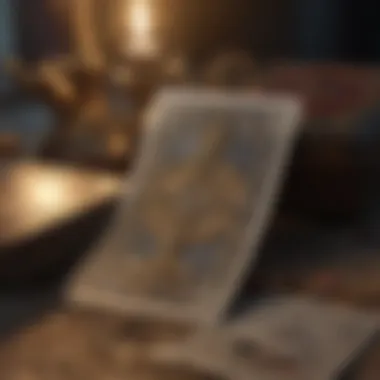
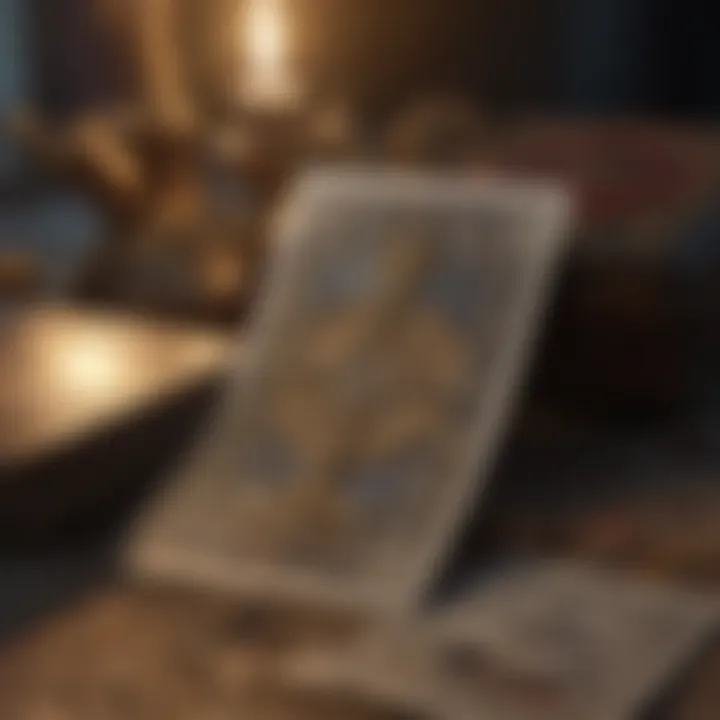
- Alphonse Mucha's Tarot of the Four Elements: Some decks influenced by Mucha's art incorporate elements of Art Nouveau aesthetics, rendering The World card with a focus on beauty and harmony in nature. This style echoes themes of balance and interconnectedness.
- Busch Tarot: In this deck, The World card may feature more historical or cultural symbols that connect deeper to specific traditions or esoteric systems. This context enriches the card meaning beyond typical interpretations.
- The Wild Unknown Tarot: Here, The World card might utilize animal symbolism or natural elements, appealing more to intuitive understanding and emotional insight than structured interpretations.
Understanding The World card in diverse decks showcases how the same fundamental concept can diverge significantly based on artistic interpretation and cultural context. Each deck offers a unique lens for readers, reinforcing the importance of exploring multiple representations to grasp the full scope of The World card's meanings in readings.
"The World card's imagery across decks invites deeper inquiry into personal interpretations and culturally influenced meanings."
The World and Other Major Arcana
The World tarot card serves as a crucial connection within the Major Arcana, encapsulating themes of completion and unity. Its positioning as the last card emphasizes the culmination of experiences and growth represented by the entire deck. Understanding its relationship with other Major Arcana cards elucidates its meaning while offering deeper insights into the tarot's narrative framework.
Relationship with Adjacent Cards
The cards that surround The World in the Major Arcana wield significant influence over its interpretation. These are notably The Fool, The Judgment, and The Universe, each contributing different facets to the overall understanding of completion on the journey of life.
- The Fool (0): Positioned before The World, The Fool represents new beginnings and potential. This relationship illustrates an essential concept: every culmination leads back to a new adventure. The Fool’s innocent, blank slate is in contrast to The World’s culmination and urges the seeker to recognize that completion is part of an endless cycle.
- The Judgment (20): This card bridges the transition toward The World. It signifies awakening and making significant choices. The link to The World emphasizes the process of reflection and decision-making that is necessary to reach fulfillment. Together, they highlight how introspection and clarity reveal the path towards completion.
- The Universe: In certain tarot decks, The Universe is an alternative depiction of The World, reinforcing its themes. When examining both cards, it is clear that they share similar meanings but differ in nuance. The Universe focuses on universal themes that connect all life, while The World is more personal, highlighting individual journeys as part of the greater whole.
Connective Themes
The World resonates with numerous themes within the Major Arcana that contribute to a holistic understanding of the tarot. These shared themes include:
- Completion and Wholeness: The World reiterates the idea present in the cards before it, emphasizing that the journey of the self is wrapped up in cycles. It connects completion with wholeness in a way that advocates for self-acceptance and integration.
- Transformation: Each card reflects transformation, whether by endings, beginnings or interim stages. The World is a culmination of those transformations, drawing on the experiences of the entire Major Arcana, signaling that growth is not linear, but a transformative process.
- Interconnectivity: A theme woven throughout the Major Arcana is the interconnectedness of individual experiences with broader contexts. The World emphasizes the importance of recognizing how one's personal journey relates to collective experiences.
"What one experiences is never separate from the larger fabric of life and existence."
This understanding not only enriches tarot readings but also enhances self-awareness and insight.'
In summary, exploring how The World relates to other Major Arcana cards enhances the complexity of its interpretation. It illustrates how journeys impact growth, invoking a sense of connectivity that is foundational to both personal experience and broader existential contemplation.
Cultural Interpretations of The World Card
Understanding the World card in the cultural context provides depth to tarot readings. Cultural interpretations help build connections between the symbolism of the card and the belief systems that surround it. Each culture offers unique insights that can enrich one's understanding of completion, fulfillment, and the interconnectedness present in life.
The World card is often seen as a reflection of how different cultures perceive the notion of cycles, achievements, and holistic understanding. This section will examine two main cultural viewpoints: Western esoteric traditions and Eastern philosophical views.
Western Esoteric Traditions
In Western esoteric traditions, the World card is frequently associated with completion in a spiritual journey. Many tarot scholars link it to the concept of the macrocosm and microcosm, where the individual and the universe mirror one another. The card embodies the culmination of the Fool's journey, emphasizing a return to unity after individual exploration.
Symbols such as the four figures in the corners of the card—representing the four elements—reinforce this connection. Each figure correlates with a specific aspect of life, emphasizing the intertwined destiny of humanity. The landscapes depicted may symbolize the world’s diversity and our shared experiences. This broad understanding helps practitioners tap into their rich heritage of spiritual practices and philosophies, assisting in personal growth and development.
Eastern Philosophical Views
In contrast, Eastern philosophies often emphasize the idea of completion through balance and harmony, akin to cycles seen in nature and existence. The World card in this context symbolizes the realization of one's potential and understanding of life's transience. Concepts like samsara, the cycle of birth and rebirth, resonate deeply here.
Several Eastern traditions teach that achieving a state of oneness with the universe happens through enlightenment. The World card serves as a powerful reminder of this unity. It prompts reflection on how one's journey impacts the collective. Practitioners may interpret the card not only in terms of personal achievement but also in terms of communal responsibility.
Both cultural lenses offer invaluable perspectives, enhancing the effectiveness and depth of tarot readings. They remind readers that the journey represented by the World card is not merely personal but also universal.
Ending on The World Tarot Card
In summary, the conclusion regarding The World tarot card encompasses multiple critical aspects that affirm its significance in tarot practice. It synthesizes key insights gleaned from a comprehensive examination of the card’s symbolism, meanings, and relationships within the deck. This card, representing completion and integration, is a powerful icon within tarot readings. It holds the potential for transformative understanding not only for the individual but also in the context of human connections and the collective experience.
Summarizing Key Insights
The World card denotes a phase of closure that precedes new beginnings. Some important insights include:
- Completion: This card represents the culmination of efforts and aspirations. It signifies successful achievements and personal growth.
- Interconnectivity: The World illustrates the links between life experiences, where each event contributes to the larger journey.
- Wholeness: It conveys themes of integration, urging individuals to embrace all aspects of themselves for true fulfillment.
When this card appears, both upright and reversed, it carries implications about one’s journey and development. It emphasizes how every ending serves as a gateway to new opportunities.
Final Thoughts on Exploration
Exploring The World card further enhances one’s understanding of the tarot as a holistic system. Each tarot card acts interdependently, influencing and informing interpretations in varied readings.
- Personal Growth: This card prompts introspection about current life phases and encourages individuals to think critically about what completion means in their lives.
- Cultural Context: The World can be viewed through diverse lenses, giving depth to its significance across traditions and belief systems.
"The World card emphasizes that every end is merely a step towards another beginning."
By synthesizing its insights, readers can gain a clearer perspective on how The World card impacts their personal and collective quests.







